celtic paganbrigid devotee worshipper of lady morrigan and lord lokihe/they main: @ghost-mist-draws
Don't wanna be here? Send us removal request.
Text
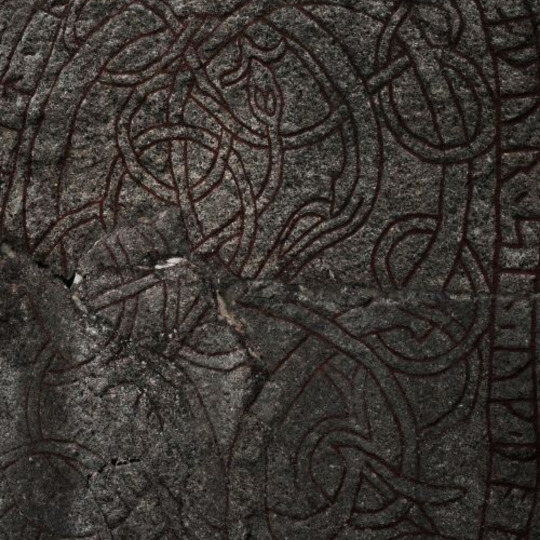


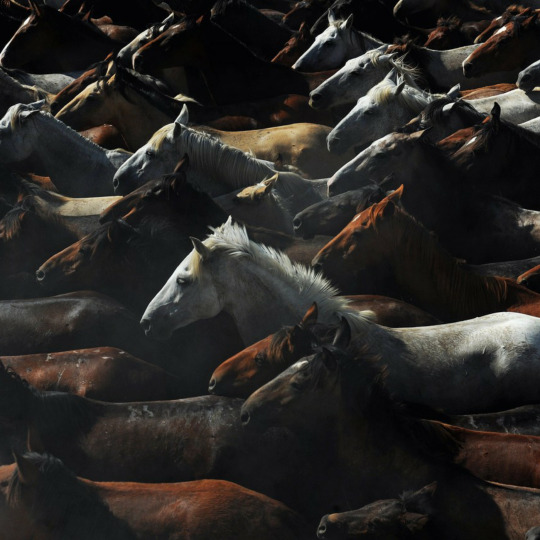


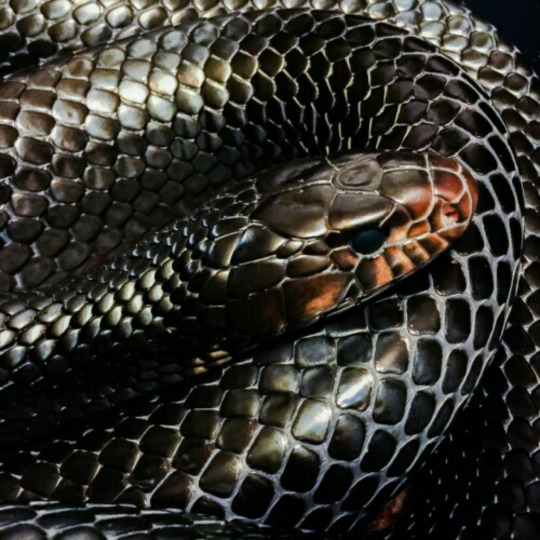

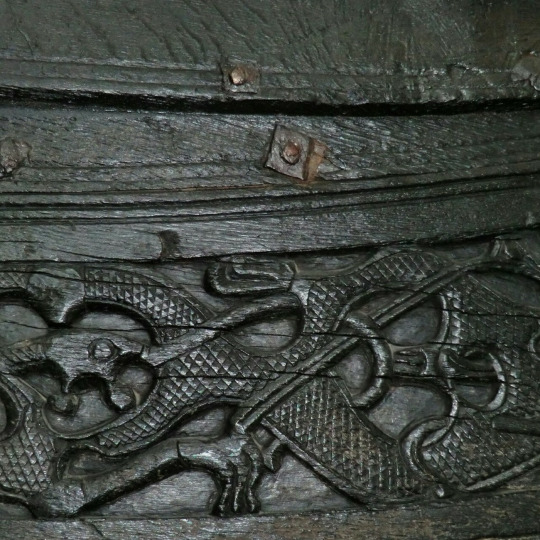
TO THE GODS → LOKI
↳ Trickster. God of mischief. He excelled all men in the art of cunning, and challenged the structure and order of the Gods which was necessary in bringing about needed change.
1K notes
·
View notes
Text
𝐁𝐞𝐥𝐭𝐚𝐧𝐞
⠂⠄⠄⠂⠁⠁⠂⠄⠄⠂⠁⠁⠂⠄⠄⠂⠄⠄⠂⠂⠄⠄⠂⠁⠁⠂⠄⠄⠂⠁⠁








⠂⠄⠄⠂⠁⠁⠂⠄⠄⠂⠁⠁⠂⠄⠄⠂⠄⠄⠂⠂⠄⠄⠂⠁⠁⠂⠄⠄⠂⠁⠁
What is Beltane?
Beltane is a fire festival celebrated on the night of April 30th into May 1st in the Northern Hemisphere, and around October 31st into November 1st in the Southern Hemisphere. It marks the midpoint between the spring equinox and the summer solstice, honoring fertility, passion, and the sacred union between the divine feminine and masculine. Traditionally, it signals the beginning of the light half of the year, a time of growth, abundance, warmth, and blooming life. Beltane celebrates freedom, love, lust, creativity, and the return of life to the natural world, bringing with it new, flourishing beginnings. May 1st is a day of joy and play. After a harsh winter, it becomes a celebration of renewal, of aliveness, and of nature’s wild rebirth.
⠂⠄⠄⠂⠁⠁⠂⠄⠄⠂⠁⠁⠂⠄⠄⠂⠄⠄⠂⠂⠄⠄⠂⠁⠁⠂⠄⠄⠂⠁⠁
The History of Beltane
The name Beltane comes from Old Irish Beltene, meaning "bright fire" or "The fires of Bel". Some people link it to the Celtic god Belenus, a solar and healing deity, while others have drawn comparisons to Baal, a fertility god, though that idea is debated and not widely accepted.
Historically, Beltane was celebrated in Celtic regions, most notably Ireland and Scotland, as a pastoral festival. Bonfires were lit on hilltops, and cattle were driven between two of them to protect them from disease and ensure fertility. People would jump over the flames, not just for luck, but as a way to connect with sacred fire and invoke fertility, health, and courage for the coming summer season.
⠂⠄⠄⠂⠁⠁⠂⠄⠄⠂⠁⠁⠂⠄⠄⠂⠄⠄⠂⠂⠄⠄⠂⠁⠁⠂⠄⠄⠂⠁⠁
Beltane and the Fairy Realm
Beltane is a liminal time, one of the two key points in the year (along with Samhain) when the veil between our world and the Otherworld grows thin. While Samhain leans into the realm of spirits and ancestors, Beltane belongs to the fae.
It is said that on the eve of Beltane, the Fair Folk wander freely, drawn to laughter, music, and offerings left with care. In many old traditions, people avoided disturbing fairy mounds or sacred groves during this time, choosing instead to leave gifts like milk, honey, or sweet bread beneath hawthorn trees. These offerings were meant to honor the fae, invite blessings, and protect against mischief.
Wearing a crown of bluebells on Beltane Eve is said to help one see the faeries, as bluebells are sacred to them. A ring of blooming bluebells is also believed to be a favorite gathering spot for garden faeries.
⠂⠄⠄⠂⠁⠁⠂⠄⠄⠂⠁⠁⠂⠄⠄⠂⠄⠄⠂⠂⠄⠄⠂⠁⠁⠂⠄⠄⠂⠁⠁
Beltane and the Hawthorn Tree
Few trees are more sacred to Beltane than the hawthorn. Often called the “fairy tree” in Irish and Scottish folklore, it is said to guard the entrances to the Otherworld. Blooming right around May 1st, its soft white-pink blossoms carry the energy of protection, love, and the unseen.
In Celtic tradition, hawthorn trees were deeply respected as portals to the realm of the fae. During Beltane, it was common to tie ribbons or small offerings to the branches while making heartfelt wishes, not demands, but gentle hopes whispered like prayers. Damaging or cutting a hawthorn tree, especially during this sacred time, was believed to bring terrible luck or stir the wrath of the Fair Folk.
⠂⠄⠄⠂⠁⠁⠂⠄⠄⠂⠁⠁⠂⠄⠄⠂⠄⠄⠂⠂⠄⠄⠂⠁⠁⠂⠄⠄⠂⠁⠁
The Sacred Fire
Fire is the central symbol of Beltane. The festival’s original name literally refers to Bel’s fires, honoring the sun and invoking purification and fertility.
Traditionally, two large bonfires were lit at Beltane, and people, along with their animals, would walk, dance, or even leap between them for blessings, healing, and protection. In some regions, ashes from the sacred fire were scattered over fields to encourage fertility. Couples, especially newlyweds, often passed hand-in-hand through the smoke as a symbol of unity and renewal.
The fire wasn’t just a ritual, it was a living spirit. Lighting it the old way, through friction rather than matches or lighters, was seen as a sacred act, calling upon the raw elemental force of nature itself.
Even today, many Beltane celebrations honor this ancient custom through bonfires, candle magic, and fire rituals. You don’t need a blaze on a hilltop, even a single flame, lit with intention, can carry the sacred spark of Beltane into your home and heart. :D
⠂⠄⠄⠂⠁⠁⠂⠄⠄⠂⠁⠁⠂⠄⠄⠂⠄⠄⠂⠂⠄⠄⠂⠁⠁⠂⠄⠄⠂⠁⠁
The Maypole
The maypole is one of the most central symbols of modern Beltane celebrations. Though it has roots in English May Day traditions, it’s been beautifully woven into Beltane for its rich symbolism of life, fertility, and union.
The tall, phallic pole rising from the earth represents the God, masculine energy, vitality, and the spark of creation. The colorful ribbons and flowers spiraling around it, often held by dancers weaving in circles, represent the Goddess, the womb, fertility, and abundant life. Together, they form a sacred spiral: a dance of harmony between the masculine and feminine, of earth and sky, movement and stillness.
As dancers move around the maypole, their steps create a living mandala, a spell in motion, tied with laughter and bright ribbons.
The dance itself is a celebration of harmony between forces, of weaving ourselves back into the rhythm of the land.
⠂⠄⠄⠂⠁⠁⠂⠄⠄⠂⠁⠁⠂⠄⠄⠂⠄⠄⠂⠂⠄⠄⠂⠁⠁⠂⠄⠄⠂⠁⠁
Beltane x Handfasting
Beltane is also a favored time for handfasting, a traditional pagan betrothal or wedding ritual where a couple’s hands are bound together with ribbons, cords, or braided threads to symbolize their union. In ancient times, a handfasting ceremony could last for a year and a day, after which the couple had the choice to stay together or part ways. Today, many modern pagans choose Beltane as a powerful and romantic time to make such commitments, drawn to the fertile energy of the season. Handfastings are often held outdoors, in nature, near fire, under blooming trees, or surrounded by loved ones in sacred space. The vows exchanged during these rituals can be traditional or deeply personal, as the magic of the ceremony lies in the heart connection and the intention to walk beside each other, bound by love and commitment.
⠂⠄⠄⠂⠁⠁⠂⠄⠄⠂⠁⠁⠂⠄⠄⠂⠄⠄⠂⠂⠄⠄⠂⠁⠁⠂⠄⠄⠂⠁⠁
Magic Correspondences
Planets: Venus
Season: Midpoint between spring and summer
Element: Fire
Time of the Day: Noon
Tarot Cards: The Strength, The Lovers, The Sun, Three of Cups
Colors: Green, Red, Pink, Yellow, Purple, White, Sky Blue, All Pastel Colors
Herbs: Mint, Rosemary, Thyme, Ivy, Nettle, Sage, Basil, Juniper, Clover, Mugwort
Fruits: Strawberries, Blueberries, Raspberries, Bananas, Lemon, Cherries
Vegetables: Cucumbers, Carrots, Garlic, Lettuce, New Potatoes
Crystals: Emerald, Bloodstone, Rose Quartz, Carnelian, Red Jasper, Green Aventurine, Moonstone, Fire Agate
Runes: Kenaz, Wunjo, Ingwaz
Trees: Hawthorn, Elder, Willow, Birch
Goddesses: Artemis, Diana, Brigid, Aphrodite, Flora, Gaia, Hera, Astarte, Venus, Juno, Freyja, Epona, Bastet
Gods: Pan, Cernunnos, Belenus, Dionysus, The Green Man, Bacchus, Priapus, Faunus, Eros, Ra
Dragons: Sairys, Fafnir
Flowers: Lilac, Bluebells, Daisy, Lilies, Foxglove, Lily of the Valley, Marigold, Tulips, Violets, Primrose, Peony, Poppy, Honeysuckle
Animals: Frogs, Swans, Cows, Deer, Squirrels, Sheep, Ducks, Cats, Bees, Rabbits, Swallows, Leopards, Lynx, Hares
Magical Powers: Love, Sex, Fertility, Protection, Cleansing, Transformation
Symbols: Maypole, Ribbons, Phallus, Bonfire, Flowers, Faeries, Sex, Floral Crowns, Frogs, Celtic Knots
⠂⠄⠄⠂⠁⠁⠂⠄⠄⠂⠁⠁⠂⠄⠄⠂⠄⠄⠂⠂⠄⠄⠂⠁⠁⠂⠄⠄⠂⠁⠁
Activities to do:
🌸 Make flower-shaped biscuits
🌸 Do candle magick
🌸 Find a local hawthorn tree and make a wish to the faeries
🌸 Wear flowers in your clothes, hair, or as bracelets
🌸 Leave offerings for faeries, as this is the season when they’re most present, you can leave them honey, milk, or biscuits
🌸 Go out for a walk in nature and feel the arrival of summer
🌸 Make a fire in the yard and dance around it (only in safe circumstances, of course); if you don’t have resources, you can light candles in your room (again, be careful)
🌸 Eat anything with oats, as it’s associated with Beltane, such as oatmeal, oatcakes, or other oat-based foods
🌸 Do a tarot or rune reading in the morning of Beltane
🌸 Take care of the trees in your yard or nearby by watering them
🌸 Honor all deities associated with fertility
🌸 Practice faerie magick
🌸 On the morning of Beltane, open your windows or door to warmly welcome the energy of the sabbat.
🌸 Make a Beltane magick jar
🌸 Water your flowers
🌸 Listen to music and dance :D
🌸 Celebrate life, fertility, love, and union
🌸 Take care of your garden, plant seeds, clean dried leaves, and prepare for summer
🌸 Make special Beltane treats
🌸 Casting your circles with oats around this time of year is also a good idea, as oats are a traditional Beltane grain for good luck
🌸 Have a picnic with your loved ones, or organize a gathering with food and grilling
🌸 Honor your ancestors
🌸 Place decorations in your garden
🌸 Plant a tree with any intention you want and take care of it
🌸 Draw runes and specific symbols on paper and burn them
🌸 Do self-love activities
🌸 Practice sex or love magick
🌸 Look for hawthorns in your area and honor them with water and offerings for faeries
🌸 Make a maypole
🌸 Collect flowers
🌸 On the morning of May 1st, wash your face with May Dew or natural spring water
🌸 Connect with the fire element
🌸 Read about the fair folk
🌸 Have a bonfire with your loved ones
🌸 Place ribbons or colored thread in trees with intentions for each, you can use color magick to attract what you need in your life right now (pink for love,
🌸 Meditate
🌸 Make flower crowns and wreaths
🌸 Perform spells for fertility, purification, and love
🌸 As this is a day of love, if you are of an appropriate age, comfortable, being sexually active is part of the celebration
🌸 Buy seeds and plant them in your garden, welcoming the growth of new life
🌸 Create a Beltane altar
⠂⠄⠄⠂⠁⠁⠂⠄⠄⠂⠁⠁⠂⠄⠄⠂⠄⠄⠂⠂⠄⠄⠂⠁⠁⠂⠄⠄⠂⠁⠁
Food and Drinks:
Oats in all forms (oatmeal, oat cookies, oat bread, oatcakes, bannock), strawberries, blueberries, honey, whipped cream with oats, strawberry biscuits, oat and honey bread, blackberry pie, lavender cake, cheese (including Swiss), seasonal potato dishes, fresh fruit salads, tomato and cucumber salads, dairy or plant-based milks, vanilla-flavoured foods, ice cream, grilled food, BBQ, spicy dishes to honor the fire element, May Day wine, white wine, regular wine (with a strawberry placed at the bottom of the glass if you wish), tarts with cheese, mayonnaise.
⠂⠄⠄⠂⠁⠁⠂⠄⠄⠂⠁⠁⠂⠄⠄⠂⠄⠄⠂⠂⠄⠄⠂⠁⠁⠂⠄⠄⠂⠁⠁
3K notes
·
View notes
Text
Haven’t had the time to worship in a while? Pour two cups of tea, one for yourself, and one for a deity! Or write your feelings down in your Notes app, as if writing to a friend: the Gods are listening. Every little act of devotion has meaning.
#definitely need to do this#i forget that the little things are worship too#like I lit brigid's candle while I wrote and that's worship#i need to stop overcomplicating it but the voices! the voices compel my perfectionism!#celtic pagan#paganblr#crow's deity journey
342 notes
·
View notes
Text
Learning Cartomancy: The Numbers | Article Series
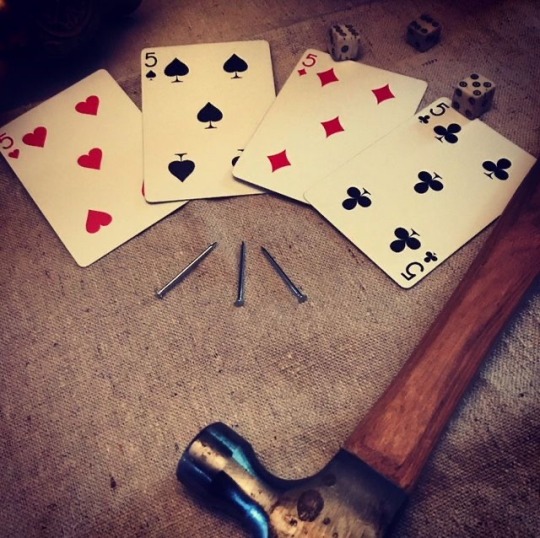
Below is a collection of articles from the blog Necromantic Matters, outlining the correspondences for each of the card numbers as they pertain to playing card divination:
Aces // Twos // Threes // Fours // Fives // Sixes // Sevens // Eights // Nines // Tens
Image source: the author’s website
32 notes
·
View notes
Text
THE MORRIGAN



WHO IS SHE?
The Morrigan is a triple goddess from Irish mythology who is associated with war, fate, and sovereignty. According to myth, she is often depicted as a crow or raven, and is said to appear in both a positive and negative guise, sometimes as a nurturing mother and other times as a destructive force. She is said to be the phantom queen of the Danaan People, the ancestral spirits of Ireland, and is sometimes depicted as a powerful seer or prophetic figure.
BASIC INFO:
Appearance: the Morrigan is often depicted as a fierce and powerful woman wearing a long, flowing black cloak or gown, and sometimes with feathers or a crown of feathers. She is also commonly associated with a black crow, which is said to be her messenger and the vessel of her power. Her appearance is usually associated with darkness and mystery, embodying the enigma and unpredictability of war and fate.
Personality: she has a complex and multi-faceted personality, often embodying multiple aspects of femininity. She is said to encompass aspects of the traditional maiden, mother, and crone archetypes, representing youthful zeal, maternal nurturing, and wise counsel, respectively. She is also known for her vengeful and bloodthirsty streak, embodying the brutal and ruthless nature of war and the chaos of fate. Despite her fierce and sometimes fearsome reputation, she is also viewed as a powerful protector and defender of the Irish people.
Symbols: cloak, spear, chariot, sword, and shield
Goddess of: magic, war, battle, life, death, sovereignty, fresh water, destiny, prophecy, and fate
Culture: Celtic
Plants: willow, aspen, rowan, snapdragon, hawthorn, yew, belladonna, mugwort, rose, and nightshade (do not consume, handle with care!)
Crystals: ravenite, yeomanite, schorl, arsenopyrite, harlequin opal, black opal, skye marble, pyrolusite, biotite, feldspar, black agate, hematite, smoky quartz, bloodstone, onyx, charoite, black obsidian, labradorite, shungite, and black tourmaline
Animals: crow, raven, horse, eel, rook, serpent, and wolf
Incense: frankincense, myrrh, sandalwood, rose, cedar, juniper, and dragon’s blood
Practices: death witchcraft, spirit work, divination, shadow work, ancestor worship, psychic abilities, and necromancy
Colours: red, black, white, blue, and green
Numbers: 3 and 6
Zodiac: Scorpio
Tarot: The High Priestess, The Tower, Queen of Swords, The Devil, Justice, and Death
Planet: Moon
Days: Monday, Imbolc, Lammas, Mabon, Samhain, Halloween, and full moons
Parents: Cailitin and Ernmas
Siblings: Ériu, Banba, Fódla, Gnim, Coscar, Fiacha, and Oll
Partner: The Dagda and an unnamed shapeshifting goddess
Children: Mechi
MISC:
Crows and ravens: the Morrigan is often associated with crows or ravens due to her nature as a deity of death, fate, and transformation. In Irish mythology, crows or ravens were often seen as messengers between the worlds of the living and the dead, and could be seen as omens of impending change or transformation. For the Morrigan, these birds served as her messengers and helped her carry out her duties as a deity of war, fate, and the supernatural. Additionally, the Morrigan herself was sometimes depicted as a crow or raven in the form of a woman.
Death: she is often associated with death because she is seen as a deity of fate and transformation, which can include death and rebirth. In Irish mythology, she is often depicted as a battle goddess who wields a spear or sword, and is seen as a bringer of violence and change. She is also associated with the concept of death as a natural and inevitable part of life, and is sometimes seen as a guide for the souls of the dead as they cross over to the afterlife.
War: in Irish mythology, she was often seen as a fierce and powerful warrior, who would appear in the form of a crow or raven to guide and aid the soldiers of the Tuatha de Danann, a group of gods and mythological beings. She was often invoked by soldiers in order to bring them victory in battle and could also be seen as a symbol of the chaos and destruction that can occur during war.
Triple goddess: she is often associated with the triple goddess archetype due to her connection with the number three and her role as a goddess of transformation and female empowerment. In Celtic mythology, the number three was often seen as sacred and powerful, and the Morrigan is sometimes depicted as embodying these three aspects of femininity: maiden, mother, and crone. This association reflects her nature as a powerful and multifaceted deity who encompasses the different phases of a woman's life, from youth and fertility to wisdom and maturity.
Samhain: in Celtic mythology, Samhain is believed to be a time when the boundary between the world of the living and the world of the dead becomes thin, allowing the spirits of the deceased to return to the world of the living. The Morrigan, as a goddess of death and transformation, is seen as playing an important role during this time, guiding and assisting the souls of the dead on their journey to the afterlife.
Magic: was seen as a powerful force that could wield the energy and power of these natural forces, and the Morrigan was often invoked as a source of magical power and insight during certain rituals and spells. Additionally, the Morrigan is sometimes depicted as a sorcerous figure in some myths, casting spells or curses and using her supernatural abilities to influence events on the mortal plane.
FACTS ABOUT THE MORRIGAN:
She owns a herd of enchanted and magical cattle.
Contrary to some interpretations, the Morrigan is not necessarily seen as an evil or destructive deity. In many myths, she is depicted as a protective and wise figure who aids and guides heroes on their journeys.
She is sometimes portrayed as a shape-shifter, able to take on the form of a crow or other animals.
The Morrigan is often associated with the number three, representing the three aspects of maiden, mother, and crone.
She is also associated with the Fae and the Banshee—a creature that generally takes on the form of an old woman who wails in mourning to announce the coming death of someone in the family.
The name "Morrigan" comes from Old Irish and means "phantom queen" or "great queen."
She is often associated with ravens or crows, which were seen as her messengers between the worlds of the living and the dead.
The Morrigan is known for appearing in the form of a woman with long, flowing hair, sometimes carrying a spear and/or a shield.
HOW TO INVOKE THE MORRIGAN:
Working with the Morrigan often involves building a relationship of mutual respect and trust with her. You can approach working with her in the following ways:
Research and study her mythology, folklore, and symbology to gain a deeper understanding of her nature and characteristics.
Set up an altar or sacred space dedicated to the Morrigan, and make regular offerings to her.
Perform rituals or spells in her honor to seek her guidance and power.
Meditate or visualize her presence in your life, and work on developing a direct channel of communication with her.
PRAYER FOR THE MORRIGAN:
Hail Morrigan, maiden, mother, and crone. We call upon you, great and powerful deity, to guide us on our path, and protect us from harm. Teach us to be strong and fearless in the face of adversity and help us to find balance in our lives.
Bless our endeavors, and grant us success in all we do. In your name, I give thanks for your presence in our lives. Hail to you, the Morrigan.
SIGNS THAT THE MORRIGAN IS CALLING YOU:
Repeatedly seeing signs of crows or ravens, which are associated with the Morrigan.
Feeling a strong connection to the themes of war, fate, and sovereignty.
Having vivid dreams or visions of the Morrigan or her symbols (e.g. a raven, a battle flag, etc).
Feeling drawn to read or learn about the Morrigan or Celtic mythology.
Experiencing strong emotions or changes in behavior that feel linked to the energy of the Morrigan.
Feeling the urge to explore or embrace warlike or competitive activities (e.g. sports, martial arts, strategy games).
Finding yourself drawn to stories of powerful women, goddesses, or wanting to honour and empower yourself.
Having a sudden urge to explore your own shadow or unconscious and to confront and transform it.
A sudden urge to create or engage in art, poetry, or music that connects to the Morrigan’s energy and symbolism.
OFFERINGS:
Red meat.
Mead.
Red wine poured into the ground.
Apples.
Milk.
Whiskey.
Storm water
Crow or raven feathers.
Knives and daggers.
Scrying.
Artwork and poetry.
Red foods.
Deep green, black and red stones/crystals.
Honey.
Dark chocolate.
Coins.
Studying Celtic mythology.
Blood (especially menstrual blood).
Traditional Irish foods.
DEVOTIONAL ACTS:
Creating sigils or magickal symbols associated with the Morrigan and her aspects (such as battle, war, death, etc) and charging them with your intention and energy.
Performing war dances, warrior rites, and ceremonies of protection and victory.
Paint your nails black or red while thinking of her.
Shadow work.
Exploring magic and divination related to the Morrigan, including the use of rune stones, scrying, and spirit communication.
Draw or paint her.
Participating in activities where you are willing to take risks and venture into the unknown, as the Morrigan is known for pushing individuals to embrace their destiny and seize control of their life.
Respecting the dead.
Working to protect and uphold your own personal sovereignty and destiny, and resisting outside influence or control.
Make a playlist that is dedicated to her, or listen to music that reminds you of her.
Lighting a black candle.
Feeding your local murder (crows).
Celebrating the changing of the seasons and honoring the cycles of life and death.
Praying and making offerings to the Morrigan, seeking her guidance and power for your magical and spiritual practice.
Screaming your heart out when alone in the woods.
Performing blessings and healing rituals for fresh water bodies, such as lakes, rivers, and streams, to honor the Morrigan’s association with water.
Standing up for yourself.
Exercising (especially if it’s challenging).
Celebrate Samhain.
313 notes
·
View notes
Text

Update: she melted her entire candle off the edge of the altar.


....I think Lady Morrigan likes the necklace I gave her
14 notes
·
View notes
Text
shoutout to worshippers+devotees of lesser known and less popular deities/entities, deities with less info on their worship, with less community to share and relate in your worship/devotion. who had to figure it out without much precedent or others' word or experience to help and guide and assure you
#literally any celtic (Irish/Scottish) deity that isn't the morrigan#and sometimes brigid if I'm lucky#anyway shout-out to my fellow Irish/Scottish pagans!! <33
675 notes
·
View notes
Text
What non-pagans think offerings are: bloody sacrifices in return for eternal glory.
What my offerings actually are: I found this cool rock that I thought Cernunnos might like.
1K notes
·
View notes
Text


....I think Lady Morrigan likes the necklace I gave her
#celtic pagan#celtic paganism#paganism#witches of tumblr#pagan witch#witchblr#pagan#paganblr#lady morrigan#the morrigan#goddess Morrigan#scottish paganism#irish paganism#deity work#crows deity journey#deity worship
14 notes
·
View notes
Text
sometimes paganism is walking down to the coffee shop and getting a self-care drink as a devotional activity for your deity
#I also picked Lady Brigid some dandelions on my way there#and am pressing some other flowers#the sun is shining today and it's so beautiful#brigid#brigid devotee#celtic pagan#celtic paganism#paganism#pagan witch#paganblr#pagan#witchblr#witchcraft#witches of tumblr#trans witch#deity work#deity worship
47 notes
·
View notes
Text
Reblog if you are a Pagan willing to answer any questions about your practice without hate, ridicule, sarcasm, or superiority.
2K notes
·
View notes
Text

11/27/2018
9 notes
·
View notes
Text
Pagans who collect rocks they find on the ground.
Pagans who buy crystals because it makes them happy.
Pagans who have to declutter a space every time they want to make an altar.
Pagans who lose track of time sitting in front of their carefully crafted altar.
Pagans who live in the northern hemisphere trying to sort through mainstream holidays to find what’s left of theirs.
Pagans who live in the southern hemisphere and struggle to celebrate seasonal holidays and feel out of synch with their community they do.
Pagans who talk to the moon about their day.
Pagans who look into the eyes of their loved ones and find traces of divinity.
Pagans who revel in the freedom of their practice.
Pagans who worry if they’re doing something wrong.
Pagans (I love y’all so much and I’m grateful for every one of you)
Have a wonderful equinox to those still celebrating it! Blessed Be
1K notes
·
View notes
Text
Some little things I've learned over a decade of witchcraft:
If you are feel called to work but are tired/drained, sit outside. Take in all the energies around you. Nature can help charge you
Every witch does a little bit of a bunch of types of magic but sticks mainly to one or two in general. You usually won't be eclectic forever. You'll find what magics work best with you.
Never be lazy or cut corners with spirits. Always be respectful and always tell them to leave when you're done
When you see a plant or ingredient with a long list of properties, there are different things at play. Season of collection, the part of the plant, the health of the plant, etc all play a role in impacting which properties it will carry.
Don't call on spirits unless you have confidence and control
Be careful with sea/water magic. Get into it gently and slowly until you have the energy figured out because it can get out of hand quickly.
Adding a little pinch of magic into your breakfast can make a major difference in your day.
Your personal emotions/feelings over something will impact a work
Planting some plants is good, not only to have a garden, but the dirt helps cleanse you too. Get all dirty and muddy. It's good for ya
Not all trees are nice
The more you listen to your intuition, the easier it will be to tell it apart from your anxieties and worries
Incense is very easy to make which is why it's usually cheap to buy. But you can find a million tutorials online on how to make your own personal incense which is great if you want a spell to take effect over a while but also want to infuse the fire energy in it.
The more you work with something the better feel you get for it. Cinnamon goes in almost everything i cook and most of my spells because me and cinnamon just get right along
Your path is yours and no one else's. It will look like yours and no one else's
7K notes
·
View notes
Text









𝐋𝐚𝐝𝐲 𝐁𝐫𝐢𝐠𝐢𝐝
𝘨𝘰𝘥𝘥𝘦𝘴𝘴 𝘰𝘧 𝘧𝘪𝘳𝘦, 𝘱𝘰𝘦𝘵𝘳𝘺, 𝘩𝘦𝘢𝘳𝘵𝘩, 𝘤𝘳𝘦𝘢𝘵𝘪𝘷𝘪𝘵𝘺,
𝘭𝘪𝘧𝘦, 𝘴𝘱𝘳𝘪𝘯𝘨 𝘢𝘯𝘥 𝘧𝘦𝘳𝘵𝘪𝘭𝘪𝘵𝘺
1K notes
·
View notes
Text

Imbolc draws to an end...
I hope you had a blessed celebration this year. Here's a watercolor painting I did of Lady Brigid to close the celebration.
#Imbolc#Celtic pagan#celtic paganism#goddess brigid#lady brigid#brigid devotee#brigid#watercolor#celtic mythology#watercolor painting#artists on tumblr#pagan artists
8 notes
·
View notes
Text
an imbolc haiku
sweeping dust away— with bleak winter energy life returns again
#celtic pagan#imbolc#wheel of the year#midwinter#happy imbolc#brigid#brigid devotee#goddess brigid#haiku poetry#haiku#imbolc poetry#pagan poetry
8 notes
·
View notes